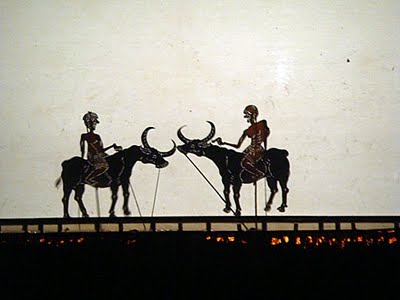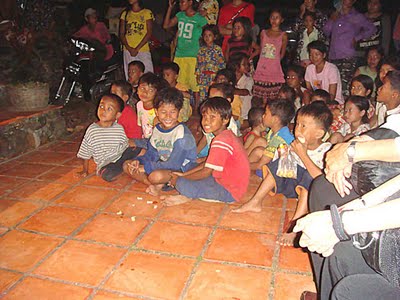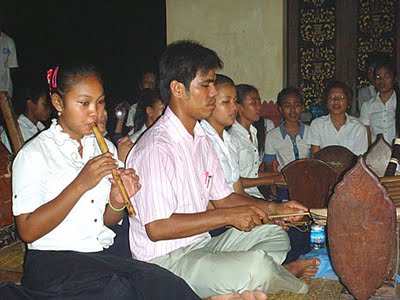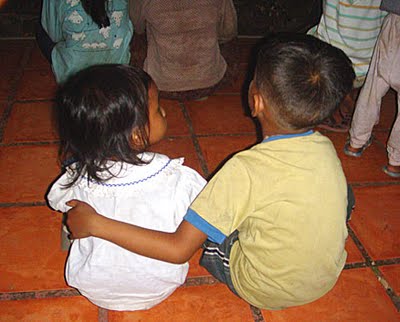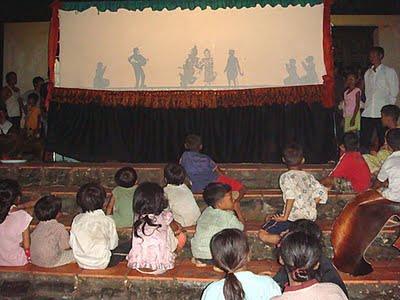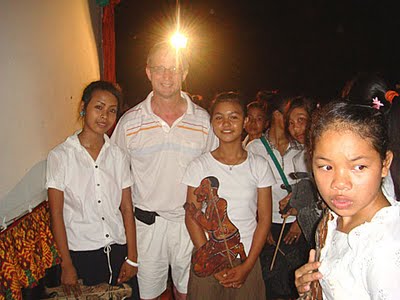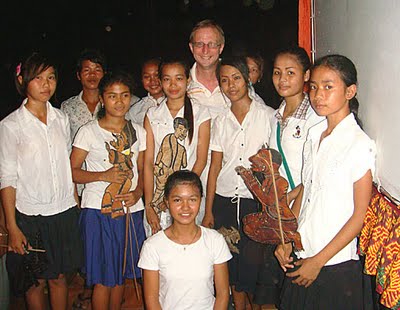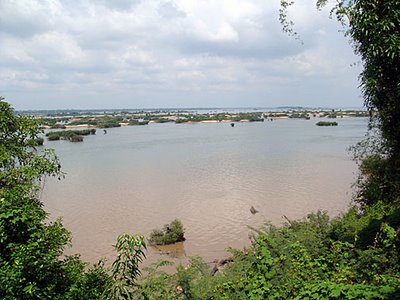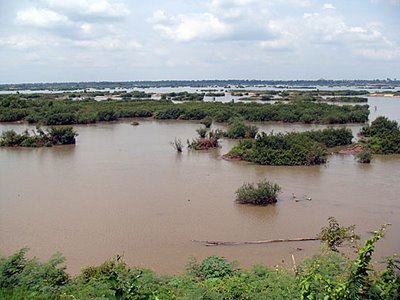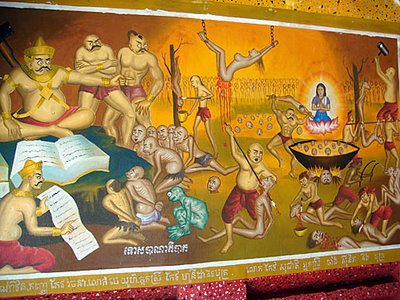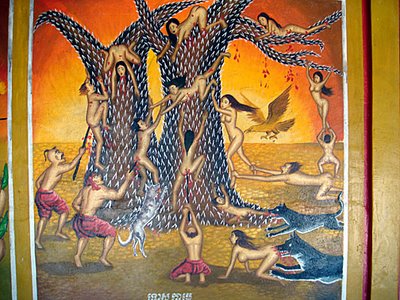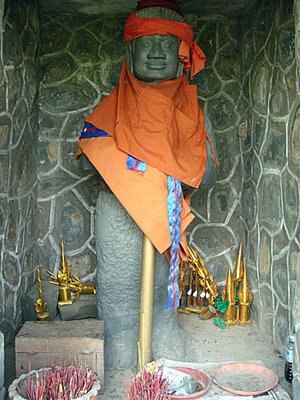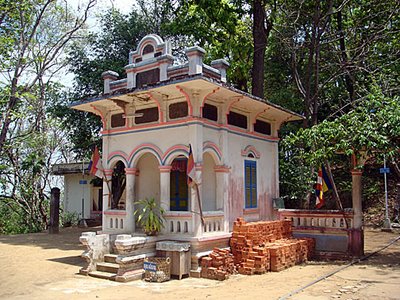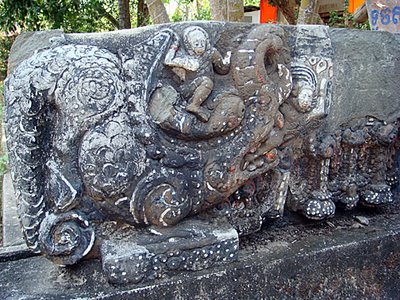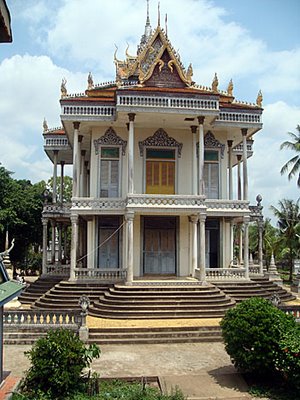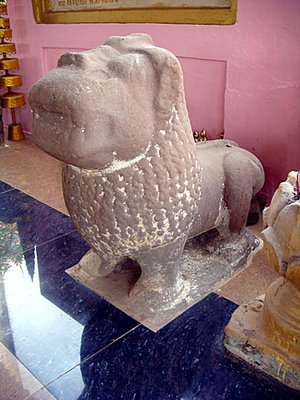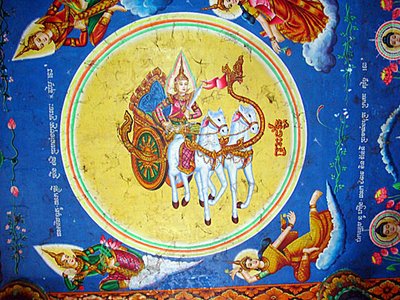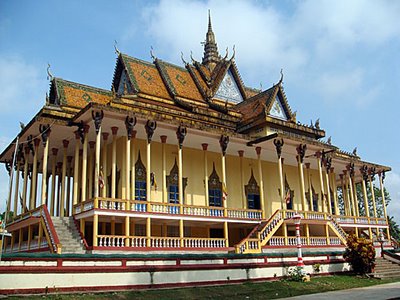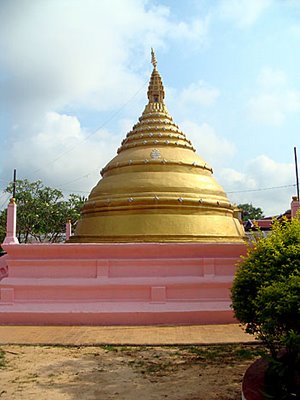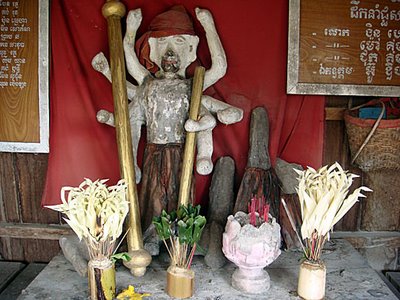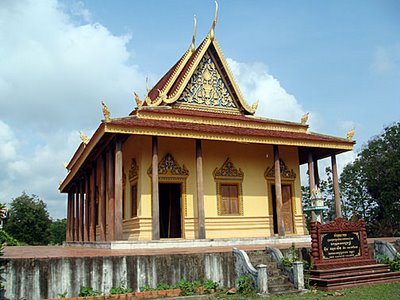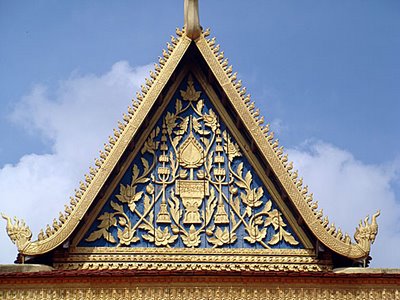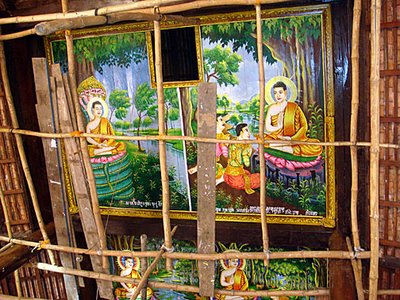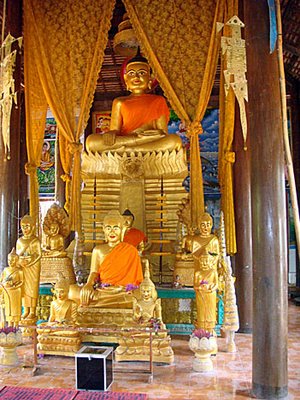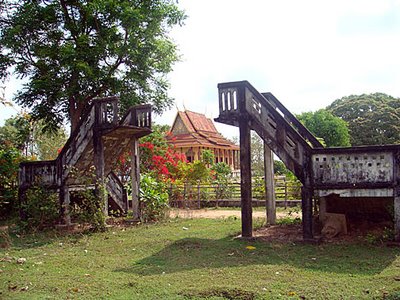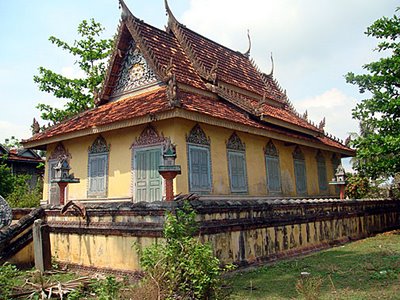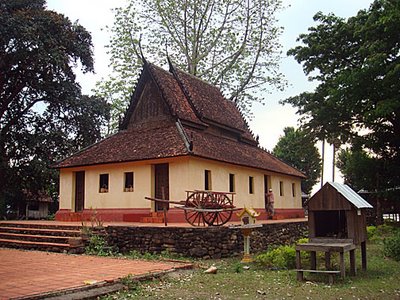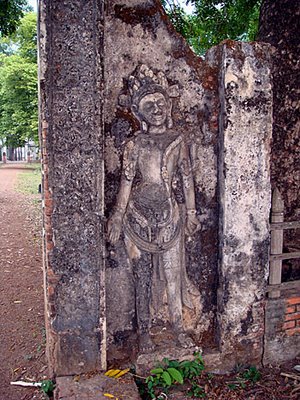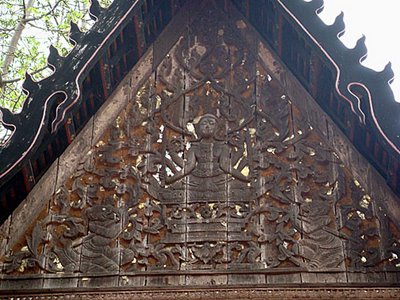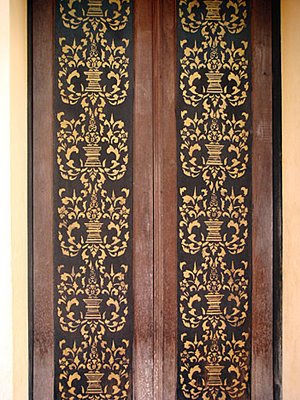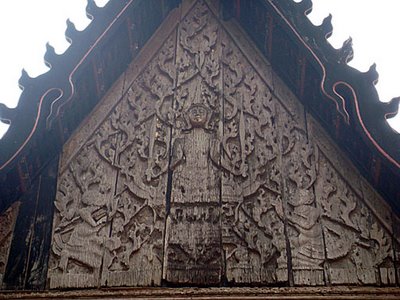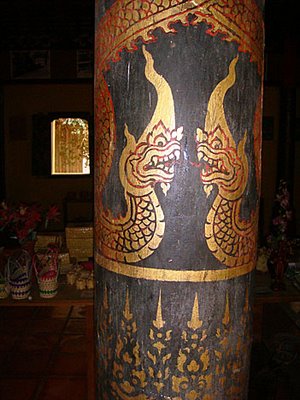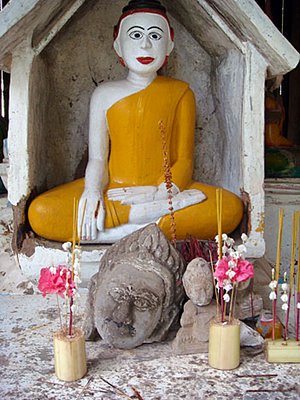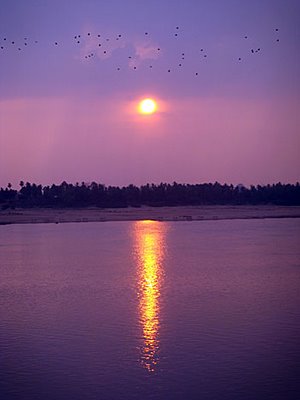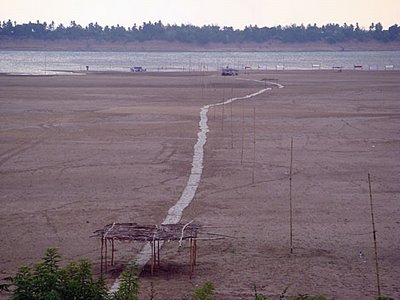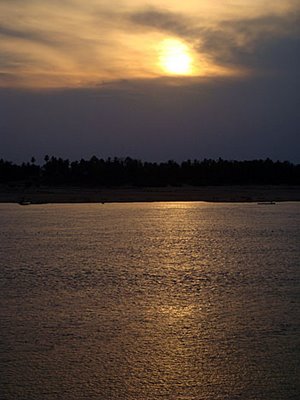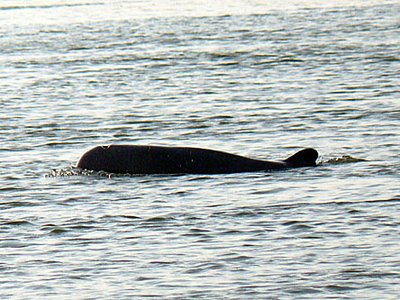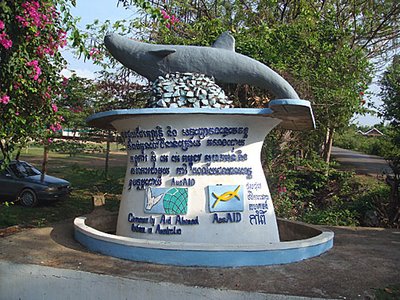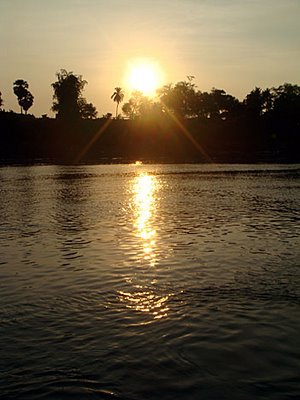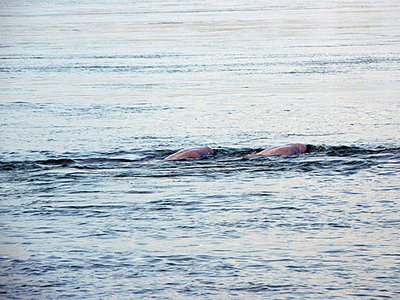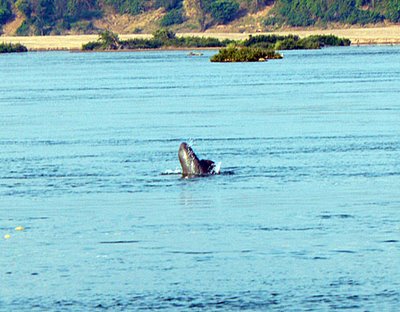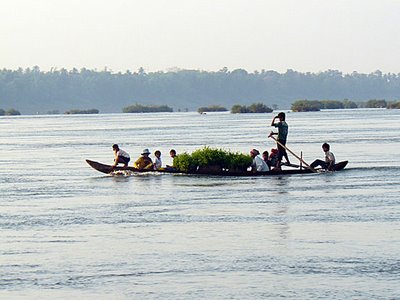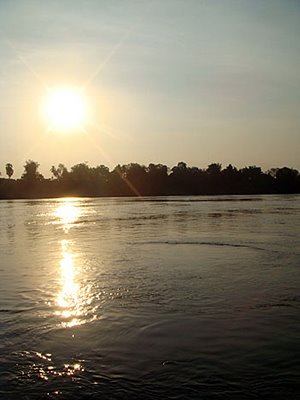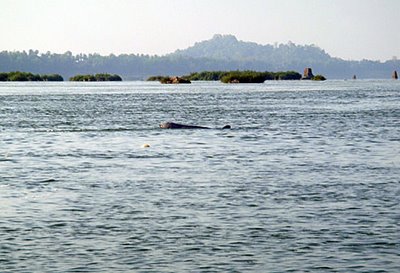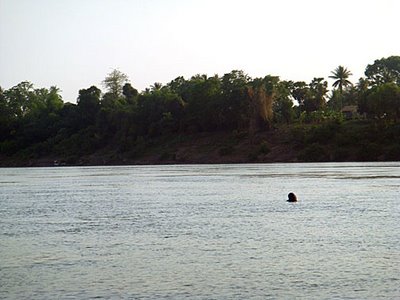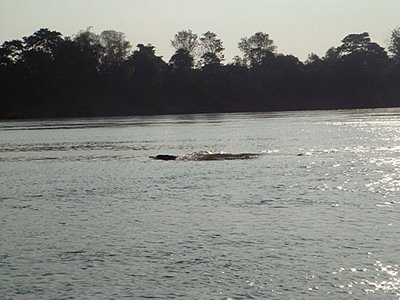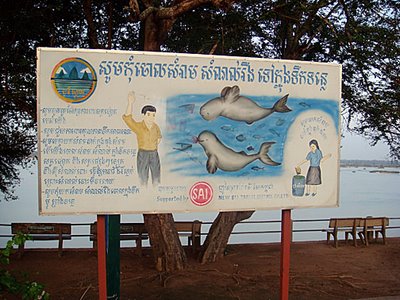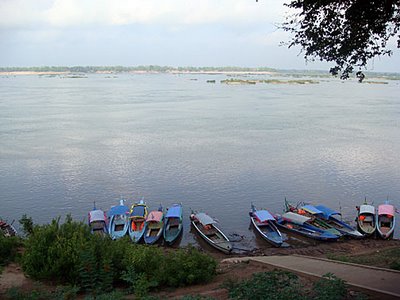Follow the Mekong
Follow the Mekong - with time to watch the ebb and flow of a river's life, Graham Reilly floats from Vietnam to Cambodia (Brisbane Times, Australia).
I stare from the riverbank at this astonishingly vast and lively world of water. Here, in the charming provincial city of Can Tho in the heart of southern Vietnam's Mekong Delta, it is as if the land is merely an afterthought. Everything is about the river and the way of life it sustains. It is a world of colour and movement, of a comforting spray of cool water on your face as you are rowed back to your hotel at night in a slim stick of a boat, of the sleepy glint of dusk as you trail your finger across the river's surface, of the cough and splutter of a small passenger ferry as it crosses the river to Vinh Long, of the throaty gurgle of a rice boat as it slowly motors to Ho Chi Minh City or Cambodia.
The Mekong begins its 4500-kilometre journey to the sea in Tibet and winds its way through China, Burma, Laos, Thailand, Cambodia and finally into the Mekong Delta. The Vietnamese call the river Cuu Long, or nine dragons, and it is easy to see why, for here the Mekong spreads in great tentacles into nine exits to the sea. Can Tho sits on the banks of one of these tributaries, the Hang Giang river, also known as the Bassac, an impossibly broad, bustling expanse of brown water. It is a pleasant capital of 300,000 people, with tree-lined boulevards, cool grassy squares and 19th-century buildings that are remnants of French colonial days. One of the great pleasures of Vietnamese provincial towns such as Hoi An or Nha Trang is the local markets and Can Tho is no exception.
Selling vegetables, fruit and seafood, its large market spreads over an entire city block on one side and follows the curve of the river on the other. There is much to do here and it is a good place to organise a home stay with a farming family. It is also a good place to do nothing much at all. Gazing out from the pleasant promenade, I see boats of all shapes and sizes, one of which takes my friends and I early next morning to the famous Cai Rang floating market. Boats from all over the region – from Bac Lieu, Vinh Long and Camau – come here to sell what seems like every fruit and vegetable ever imagined: jackfruit, oranges, rambutan, bananas, longans, pineapples and sweet potatoes.
An, 30, is our guide. It is her father's boat and her husband navigates it safely through the shifting mass of craft on the river. "He is a good husband," she says, smiling. "He is happy to cooking and washing with me at night." We nod in agreement. A good husband can be hard to find. I explain to her that we want to travel to Cambodia by boat, from Can Tho to Chau Doc, across the border and up to the Cambodian capital, Phnom Penh, and then on to Siem Reap, home of one of the great wonders of the world, the temple complex of Angkor Wat. We've got six days for the journey of more than 400 kilometres. An offers to arrange the journey and a few phone calls later we agree to meet at the Can Tho dock at 2pm the next day. I tell her I have visited these places before but always by road or air. This time I want a gentler, more romantic mode of transport along the mighty Mekong and its tributaries. I want to hear the gentle slap of the water against the boat, feel the tropical breeze on my skin and watch people go about their lives on the riverbanks. I want to be part of the landscape. I want to make the journey as important as the arrival.
Can Tho has several restaurants along the waterfront and that night we decide on the Thien Hoa. We settle happily at a pavement table in the evening balm, show no restraint and order a feast – fried snake with onions, sea bass soup with tamarind, prawns steamed in beer, catfish hotpot and coconut ice-cream. It is a meal to remember and a harbinger of culinary experiences to come. Loaded up with fruit and sandwiches we've borrowed from the sumptuous breakfast buffet at the Victoria Hotel, we board the "fast boat" to Chau Doc, a journey An tells us will take about three hours. She says the slow boat, which leaves at 6.30am, takes about eight hours.
The fast boat is a long, relatively sleek, metal-hulled craft that does not go particularly fast, which turns out to be a blessing, given the pleasure of being on the water and lounging on the deck and watching the world go by. Most of the passengers are part of a package run by Delta Adventure Tours that includes a night at the company's floating hotel in Chau Doc. As we are travelling independently, we each pay $US20 ($23) for the trip. The boat seats about 30 people in something more or less resembling comfort. Sitting on the deck munching on a bag of rambutan, it becomes immediately clear to me that this is a working river. Large boats, washing fluttering in the breeze and overloaded with bananas, take their produce to market. Other boats dredge silt from the riverbed to be used in the construction industry. The weight of their cargo lays them so low in the water it is as if just one more grain could tip them into the muddy depths.
The riverbanks jump with activity. A line of brick kilns several kilometres long puffs smoke as families stack freshly baked bricks or load them on to waiting boats, the children straining under the burden. The smell of fermenting fish sauce wafts from factories onshore. Much of the riverbank is lined with sandbags to protect stilted houses from the river, which swells dramatically during the wet season. There is so much of interest to observe on the water and the riverbanks that the journey passes quickly and before I know it we are approaching Chau Doc, a journey of 5 hours. The river seems to settle in the dusk and takes on a kind of dreamy indolence, as if it has done enough work for the day. Meanwhile, I have been lulled into a sense of well-being I've never experienced when travelling by road or air.
Impressed with our stay at the Victoria Hotel in Can Tho, we decide to spend a few nights at the Victoria in Chau Doc. It is another elegant, splendidly positioned, colonial-style building perched on the banks of the Bassac. The view from our room across the spreading river takes my breath away. Chau Doc shuts down early and we are lucky to get to the Bay Bong restaurant while it is still serving dinner. The restaurant forgoes interesting decor for delicious Mekong cuisine. It's another feast. We start with canh chua, the local sweet-and-sour fish soup, and follow this with steamed fish and prawns, including ca kho, stewed fish in a clay pot. It's so good we return the next night. Chau Doc is another attractive and welcoming provincial town of about 100,000 people with an enormous market that snakes along the riverfront. The fish section alone – which has not just fresh fish but dried, spiced, marinated and salted – is wondrous.
We're close to the Cambodian border here and the people are more obviously Khmer, with their fuller features, darker skin and a preference for a chequered scarf over the ubiquitous Vietnamese conical hat. It is also home to a sizeable community of Chams, a Muslim minority of Malaysian appearance who live on the other side of the Bassac river. We hire a boat and motor across to the Cham village. On the main street, dotted with stalls selling fruit and vegetables and snacks, women chat in the shade of the verandas of their wooden houses. Little girls sell waffles and simple cakes to visitors. I meet the caretaker of one of the two mosques. He shows us a short film about the history of the Cham but it is in Vietnamese so we leave none the wiser. This part of the Bassac river, where it meets the Mekong, is home to an extraordinary concentration of floating houses, each of which is a self-contained fish farm. In the centre of each house is a large cage submerged in the river, in which families raise local bassa catfish, thousands of tonnes of which are exported to Australia every year. The fish are fed a kind of meal made from cereal, fish and vegetable scraps in cauldrons that rumble and roil. The smell is challenging.
At eight the next morning, we board another fast boat for the journey to the Cambodian capital. On another steamy, insanely hot day, we are looking forward to spending the trip on the deck, savouring the breeze. But a gaggle of young American backpackers with newsreader voices storm the boat and secure the outdoor area as their headquarters. It is their world. We just live in it. As we travel towards Cambodia, the river begins to change. Gone is the frenetic boat activity and on the riverbank life takes on a less industrial, more bucolic demeanour. As we rejoin the Mekong, the river widens and soon the factories on the shore are replaced by cornfields, banana trees that shift and flap in the breeze and ragged, palm-thatched huts. Families bathe in the shallows and children scrub and splash their wallowing buffaloes. One-and-a-half hours later, when we reach the border at Vinh Xuong, Vietnam, and Kaam Samnor, Cambodia, we're in a different, more lush, more languid world.
We disembark at the border post and after an hour or so filling in various forms and questionnaires, we say goodbye to the Vietnamese boat and board the altogether less salubrious Cambodian craft for the rest of the journey. But in the end the boat's state of rugged disrepair matters little and most people spend the afternoon sitting on the rear deck or lounging on the bow and impairing the vision of the driver. It is all too idyllic and, as it turn out, too good to last. Low water levels in the Tonle Sap river mean we have to complete the final leg of the journey by bus. But even this is fascinating, if cramped, as we hurl through the countryside and the sedate outskirts of Phnom Penh. As we arrive in the busy heart of the capital, I check my watch. It was just over seven hours ago that we boarded the boat in Chau Doc.
At our hotel, the owner tells us the water levels in the Tonle Sap are too low for us to go by boat to Siem Reap and that we'll have to take the bus or fly. He dismisses our disappointment, saying the boat has a karaoke machine on board. "Very noisy." But we won't decide what to do until after dinner – perhaps some steamed fish in coconut milk or fried squid with green peppers. As we hop into a tuk-tuk to take us to the waterfront, a young girl, brown as a nut and cute as a button, implores us to buy some bottled water. "What's your name?" I ask. "Cosmic," she replies, beaming. "Where are you from?" "Australia." "Do you know Kevin Rudd?" she asks. "Of course." "Well, he is my father." I look puzzled and she giggles. We are smitten and it's bottled water all round. As we putter away, she yells to us: "Tell Kevin his daughter says hello." I wave and promise I will.
Labels: Mekong River
